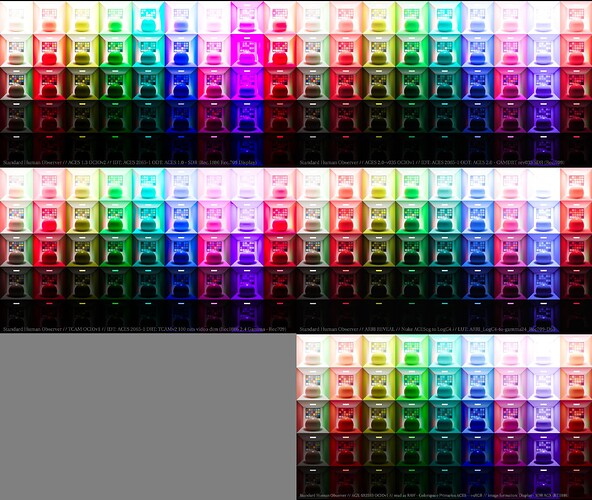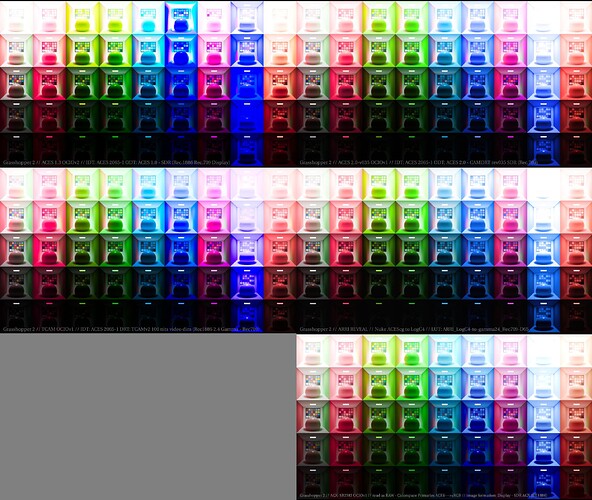Hi Thomas,
similar to the blender/cycles RGB balls example that I posted a while back, I took the two EXR files and passed them though the same „pipeline“ to see them in SDR & HDR:
- The EXR files were loaded into Nuke as ACES 2065-1
- The left/center box N5 grey patch was exposure balanced to the ACEScg reference chart and overlaid with it as well as round circles.
- I raised the exposure 2/3 of a stop to end up with kind of a middle grey in the nuke viewer for that patch with the Mac/Digital Color Meter.
- The ProRes 4444 files were exported as SDR and HDR with the following OCIO-configs
- ACES 1.3 OCIOv2 SDR&HDR (as well for the ARRI REVEAL output via the ARRI LUTs)
- ACES 2.0 rev035 OCIOv1 SDR&HDR (no HLG available)
- TCAM OCIOv1 SDR & HDR
For AgX I took a slight different route:
- Read the EXR files as RAW
- Apply a Nuke Colorspace node to convert the primaries from ACES to sRGB/Rec.709
- The ProRes 4444 files were exported as SDR and HLG.
- For this rendering I could leave out the exposure raise of 2/3 of a stop, because the image already shows the N5 patch of the left/center box as middle grey on the display.
- The AgX HLG versions are still a bit experimental, because I am not really sure yet if I did everything okay. I am still figuring out how to render a PQ version as well.
Here are the files on a google drive link (H.265 10-Bit): ACESCentral_SCB_comparisons - Google Drive
And YouTube uploads can be found here (direct uploads of ProRes 422HQ in UHD): ACES Central - ACES 2.0 CAM DRT Development - YouTube

